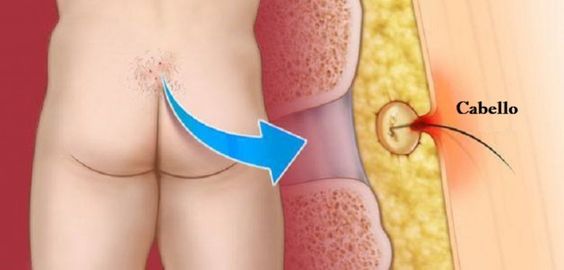Painless Progress: The Latest Breakthroughs In Pilonidal Sinus Treatment
Pilonidal sinus, a condition characterized by the development of small cysts or abscesses near the tailbone, has long been associated with discomfort and extended recovery times. However, recent advancements in medical science have brought about a paradigm shift in the treatment landscape, offering hope to those suffering from this ailment. In this article, we will explore the latest breakthroughs in pilonidal sinus treatment, focusing on innovative approaches that prioritize painless progress and faster recovery.
Understanding Pilonidal Sinus
Before delving into the latest breakthroughs, it’s crucial to understand the nature of pilonidal sinus. This condition typically occurs in the cleft at the top of the buttocks, where small hair follicles become blocked and infected, leading to the formation of cysts or abscesses. The resulting sinus tracts can cause pain, swelling, and discomfort, often requiring medical intervention.
Breakthrough 1: Minimally Invasive Techniques
One significant breakthrough in pilonidal sinus treatment is the widespread adoption of minimally invasive techniques. Traditional open surgeries often involve large incisions, leading to increased pain, longer recovery times, and a higher risk of complications. Minimally invasive procedures, on the other hand, utilize smaller incisions and specialized tools, reducing trauma to surrounding tissues and facilitating quicker healing.
Laser ablation, a minimally invasive technique, has gained popularity in recent years. This approach uses laser energy to remove or close off the affected sinus tracts, offering a less painful alternative to traditional surgeries. Patients undergoing laser ablation often experience shorter hospital stays and a faster return to normal activities.
Breakthrough 2: Endoscopic Treatments
Endoscopic procedures have emerged as another groundbreaking option for pilonidal sinus treatment. Endoscopy involves the use of a thin, flexible tube with a camera and light source to visualize and treat the affected area. This approach allows surgeons to access the sinus tracts with minimal disruption to the surrounding tissues.
Endoscopic pilonidal sinus treatment typically involves the removal of hair and debris from the sinus tracts, followed by the application of specialized techniques to close off the openings. This minimally invasive approach results in less pain, reduced scarring, and faster recovery compared to traditional surgical methods.
Breakthrough 3: Platelet-Rich Plasma (PRP) Therapy
Platelet-rich plasma (PRP) therapy has shown promising results in accelerating the healing process for pilonidal sinus patients. PRP is derived from the patient’s own blood and contains a concentrated amount of platelets, growth factors, and healing proteins. When applied to the affected area, PRP promotes tissue regeneration and reduces inflammation, leading to a faster and less painful recovery.
PRP therapy is often used in conjunction with other treatment modalities, such as surgery or laser ablation, to enhance the overall effectiveness of the intervention. Its regenerative properties make it a valuable addition to the evolving landscape of pilonidal sinus treatment.
Breakthrough 4: Closed Wound Healing Techniques
Traditionally, open wound healing has been a standard approach after pilonidal sinus surgery. However, recent breakthroughs in closed wound healing techniques have challenged this norm. Closed wound healing involves carefully stitching the wound after surgery, reducing the risk of infection and promoting a quicker recovery.
Specialized closure techniques, such as tension-free primary closure and Limberg flap procedures, aim to minimize tension on the wound, allowing for improved healing without the need for prolonged wound care. These advancements contribute to a more comfortable postoperative experience and a faster return to daily activities.
Breakthrough 5: Antibiotic-Impregnated Dressings
In the pursuit of painless progress, researchers have explored innovative wound care options, including antibiotic-impregnated dressings. These dressings, infused with antimicrobial agents, help prevent infection and promote a sterile environment for wound healing.
The use of antibiotic-impregnated dressings is particularly beneficial in cases where open-wound healing is preferred. By minimizing the risk of infection, these dressings contribute to a smoother recovery process and lessen the discomfort associated with wound care.
Conclusion
The landscape of pilonidal sinus treatment is evolving, with these latest breakthroughs paving the way for painless progress and faster recovery. Minimally invasive techniques, endoscopic treatments, PRP therapy, closed wound healing, and antibiotic-impregnated dressings represent significant advancements that offer hope to individuals grappling with this challenging condition.
As these innovations continue to gain traction, it is essential for patients and healthcare providers alike to stay informed about the latest options available. Painless progress in pilonidal sinus treatment is not only achievable but is increasingly becoming a reality for those seeking relief from this often debilitating condition.


